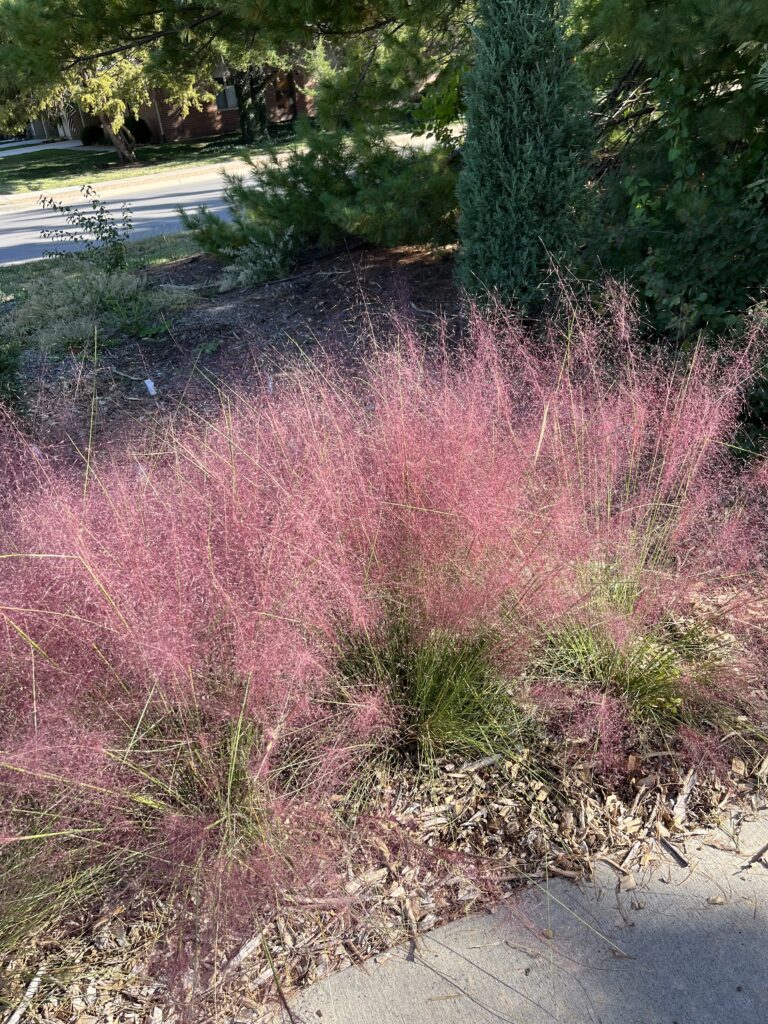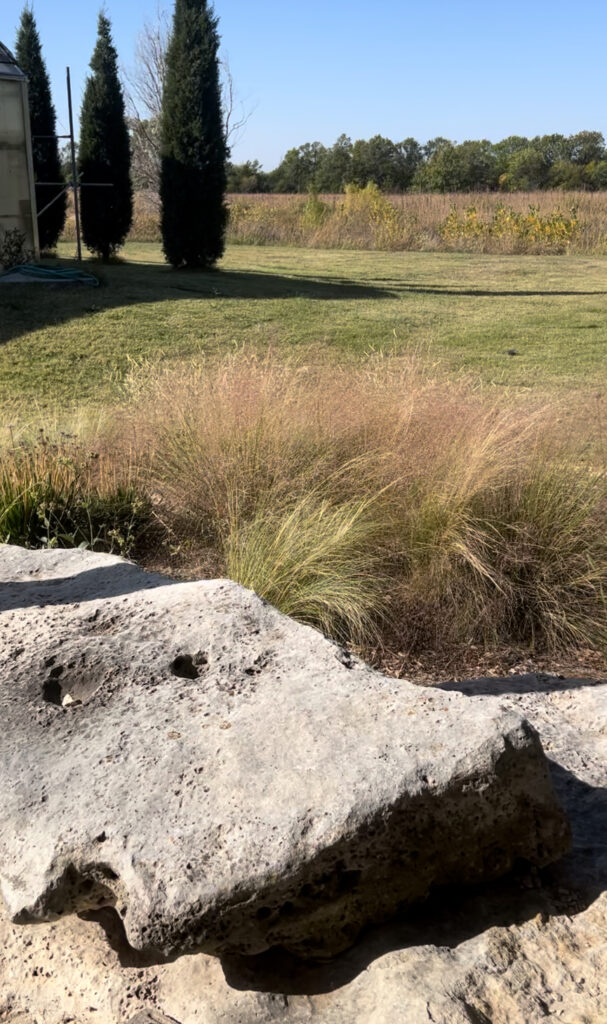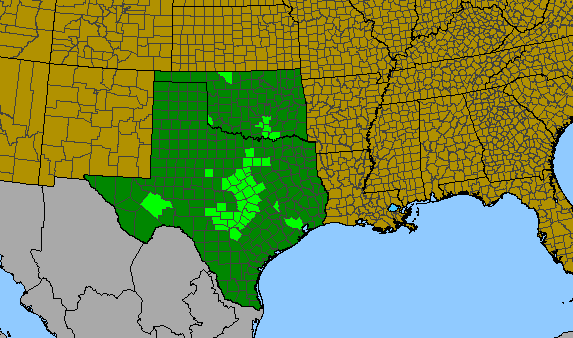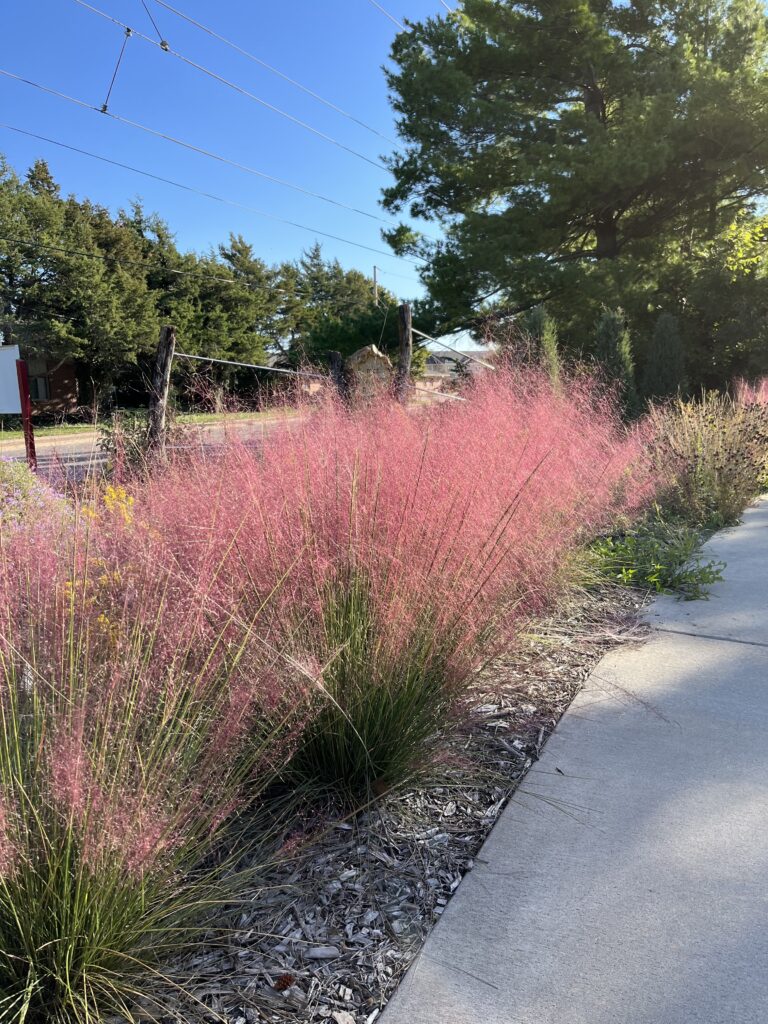Muhly grass is in its prime this time of year, and all our regular visitors are asking about it. This native grass is unforgettable once you see it in bloom, and we are lucky to have multiple types growing on our grounds. Read on to find out which species is right for you!
Muhlenbergia capillaris – Muhly grass, Hair
Planted in the northwest corner of the Arboretum, our plot of muhly grass is in its third year. When first planted they are pretty thin and unimpressive, but once mature these grasses really put on a show, especially if planted in large groups. Vibrant pink seed heads appear in late summer and persist in a thick cloud of color all through fall. Extremely drought tolerant, they hardly need watering once established. They require excellent drainage, best planted in gritty soils, or on a slope.
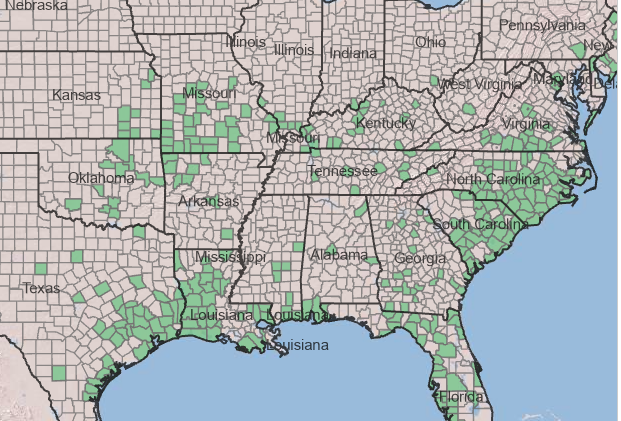
Muhlenbergia reverchonii – Seep Muhly
Usually smaller in stature, this grass is notably less stiff. While M. capillaris grows straight up, the graceful blades of seep muhly are arching and curled. It isn’t as deep in color, but still has a nice pink hue that is slightly more airy and light. Better for folks who prefer more neutral tones. This species has much more movement in the wind, and is softer to the touch. Something to think about when installing grasses around play areas or walkways!
Muhly Grass cultivars

There have been some great options on the market for Muhly grass cultivars in recent years, including a variety of M. capillaris called ‘White Cloud’. It has all the allure of those wispy seed heads but in an ethereal white, a perfect pop for darker backdrops like brick or evergreens. At 4 ft tall it grows a bit taller than the pink types and can be used as a fluffy, neutral tone backdrop in the garden. Muhlenbergia ‘Undaunted’ is a well-loved cultivar of M. reverchonii. It’s weeping seed heads and open habit make it a great specimen plant for the perennial border.

No matter which Muhly grass you choose, as long as you plant in full sun and well draining soil, you will surely be thrilled with its light texture and season-long interest. It is a water-wise plant with no major pest problems, but it does have few flaws: collapses easily in heavy snow, not very hardy in northern zones, and doesn’t always establish well when planted in fall. Keep those things in mind when considering adding this grass to your landscape. Look out for the spring update of the Native Plant Guide on our FloraKansas page to find out what species we will have available at our spring sale.

